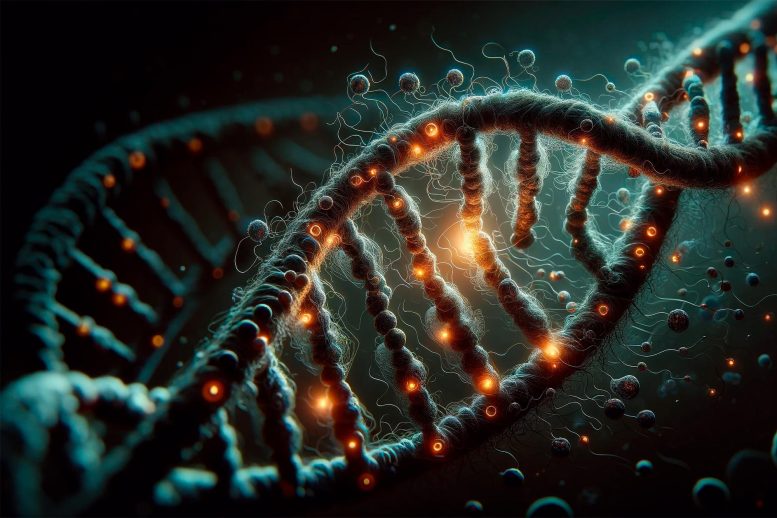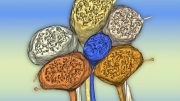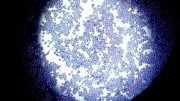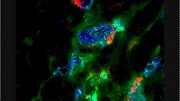
New research reveals insights into the “dark genome,” focusing on LINE-1, a genetic element associated with various diseases. An international team of scientists detailed the structure of LINE-1 and its reverse transcriptase enzyme, offering potential pathways for disease treatment. The study highlights similarities between LINE-1 and HIV-1 reverse transcriptase, paving the way for targeted drug development. Credit: SciTechDaily.com
Understanding the mechanism of LINE-1 is key to developing potential new treatments for cancer, autoimmune disorders, neurodegeneration, and even aging.
Research published on December 14 in Nature sheds light on a small part of the so-called “dark genome” — the 98 percent of the human genome whose biological function is largely not known.
In this case, an international multidisciplinary team reported the first high-resolution images and structural details of a genetic element known as LINE-1, which inserts itself into the human genome and is implicated in diseases such as cancer, autoimmune disorders, neurodegeneration, and even aging.
Uncovering LINE-1’s Structure and Impact
LINE-1 is described in the paper as an “ancient genetic parasite” with about 100 potentially active copies in each person. LINE-1 activity is often correlated with disease.
Unlike DNA, which makes RNA and then proteins, retrotransposons like LINE-1 work backward, making DNA from RNA and then inserting it into the genome. The enzyme needed for this process is called LINE-1 reverse transcriptase, or LINE-1 RT.
“Retrotransposons are often referred to as ‘jumping genes’ that insert themselves into our chromosomes with a copy-and-paste mechanism,” explains Matthias Götte, professor and chair of the Department of Medical Microbiology and Immunology at the University of Alberta and one of the eight co-corresponding authors.
“For this paper, we discovered the essential steps in this process, which could then lead us to ways to inhibit the enzyme and eventually treat those diseases.”

University of Alberta virologist Matthias Götte contributed his lab’s leading expertise to a major international study revealing the inner workings of LINE-1, an “ancient genetic parasite” implicated in cancer, autoimmune disorders, neurodegeneration and aging. Credit: John Ulan
Collaborative Efforts and Findings
The team included researchers from institutions in the United States and Europe, as well as biotechnology partners. Götte’s lab was the only Canadian contributor to the research, which was led by investigators from Harvard Medical School and Boston-based biotechnology company ROME Therapeutics.
“Our integrated analyses reveal the inner workings of the molecular machine that has written nearly half of the human genome,” the researchers report. “Understanding LINE-1 structure and function is important both in evolution and, increasingly, in human disease.”
The Götte lab provided much of the biochemical data in the paper. “We expressed and purified LINE-1 RT in the lab and then did biochemical experiments to understand how it actually synthesizes new DNA from RNA and inserts it back into the genome,” he explains.
Götte is an expert on polymerases and RTs — or replication engines — of viruses such as HIV and HCV. He is now focused on those with high epidemic potential such as Ebola, Lassa and SARS-CoV-2.
“We identified similarities between the LINE-1 RT and the HIV-1 RT, but also differences, and that will allow us to develop drugs that are more specific to this particular LINE-1 enzyme,” says Götte.
“It was a large team effort with world-class structural biologists, and that’s why the science is absolutely fantastic,” he adds. “Effective treatments for important human diseases can only be developed with a very strong scientific foundation.”
Götte previously worked with a similar scientific team to publish research on the human endogenous retrovirus-K RT enzyme, which is also implicated in disease.
Götte credits his research associate Egor Tchesnokov for carrying out four years of experiments for this paper. “He’s extremely good at it, and I’m very grateful to have him in the lab.”
Götte’s research on this project was sponsored by ROME Therapeutics. He holds equity and has also received consulting fees from ROME Therapeutics.
Reference: “Structures, functions, and adaptations of the human LINE-1 ORF2 protein” by Eric T. Baldwin, Trevor van Eeuwen, David Hoyos, Arthur Zalevsky, Egor P. Tchesnokov, Roberto Sánchez, Bryant D. Miller, Luciano H. Di Stefano, Francesc Xavier Ruiz, Matthew Hancock, Esin Işik, Carlos Mendez-Dorantes, Thomas Walpole, Charles Nichols, Paul Wan, Kirsi Riento, Rowan Halls-Kass, Martin Augustin, Alfred Lammens, Anja Jestel, Paula Upla, Kera Xibinaku, Samantha Congreve, Maximiliaan Hennink, Kacper B. Rogala, Anna M. Schneider, Jennifer E. Fairman, Shawn M. Christensen, Brian Desrosiers, Gregory S. Bisacchi, Oliver L. Saunders, Nafeeza Hafeez, Wenyan Miao, Rosana Kapeller, Dennis M. Zaller, Andrej Sali, Oliver Weichenrieder, Kathleen H. Burns, Matthias Götte, Michael P. Rout, Eddy Arnold, Benjamin D. Greenbaum, Donna L. Romero, John LaCava and Martin S. Taylor, 14 December 2023, Nature.
DOI: 10.1038/s41586-023-06947-z









Cidp and diabetic neuropathy can be healed